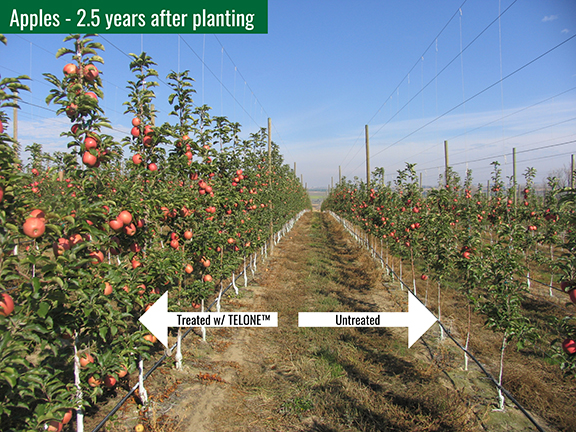Nothing Dull About Taking On Tarnished Plant Bugs

Identification
The tarnished plant bug (Lygus lineolaris) attacks a wide variety of economically important herbaceous plants, vegetable crops, commercial flower plants, fruit trees, and nursery stock. It is among the most damaging of the true bugs and is known to transmit plant diseases.
The list of vegetable crops subject to attack includes broccoli, cabbage, corn, cowpea, cucumber, eggplant, endive, escarole, fennel, horseradish, lettuce, lima beans, pepper, potato, radish, snap beans, squash, strawberries, sweet potato, tomatoes, watermelon, and many others.
The insect is about a ¼-inch in size and is light brown and spotted with white, yellow, and black spots that give the insect a tarnished appearance. There is a clear yellow triangle marked with a black dot on the lower third of each side. The antennae and legs are relatively long. The adults and nymphs use their needle-like mouthparts to feed on plant juices and watery saliva is injected into the feeding site to aid in the breakdown of plant tissues.
Symptoms appear within a few weeks after feeding injury. Feeding causes terminal growth to be yellowed or distorted thereby reducing plant growth and causing them to appear unthrifty. Damage symptoms attributed to Lygus bugs include brown discolored tissue, premature drop of buds, flowers, multiple crowns, swollen nodes, and leaf crinkling. A condition called “catfacing” can occur when the tarnished plant bug feeds on developing fruit. Damage when the fruit is small can cause the fruit to be deformed and misshapen when it matures. The fruit also may be aborted and drop to the ground if it is too heavily damaged. The feeding damage on strawberries is called “buttoning.”
Survival And Spread
L. lineolaris occurs throughout most of North America and overwinters as adults in dead weeds, leaf litter, under tree bark, and other suitable shelter. Adults become active in early spring and feed on newly developing buds and shoots. The egg is small and slightly curved. Eggs often are deposited on petioles or at the base of leaf blades, but the preferred location varies with the crop attacked. Eggs are usually deposited singly, but occasionally more than one egg will be found together. After seven to 10 days, yellowish-green nymphs emerge and begin feeding. Older nymphs are yellow green to green and wingless. The life cycle is completed in three to four weeks. Fourth- and fifth-stage nymphs have four black spots on the thorax and one on the abdomen. The head is light green. There are two to three generations per year. Population peaks for adults generally occur in early July, early August, and early September.
Management Methods
Plant bug populations tend to be aggregated or clumped, which requires thorough scouting if population assessments are to be accurate. White sticky traps reportedly work well in vegetable crops. Several parasitoids are known, but native parasites seem to be more effective at parasitizing Lygus on weeds than on crops. Several insecticides are available for control and multiple applications may be necessary.
Consult UF/IFAS recommendations for currently labeled insecticides for tarnished plant bug in vegetables.










